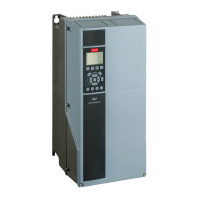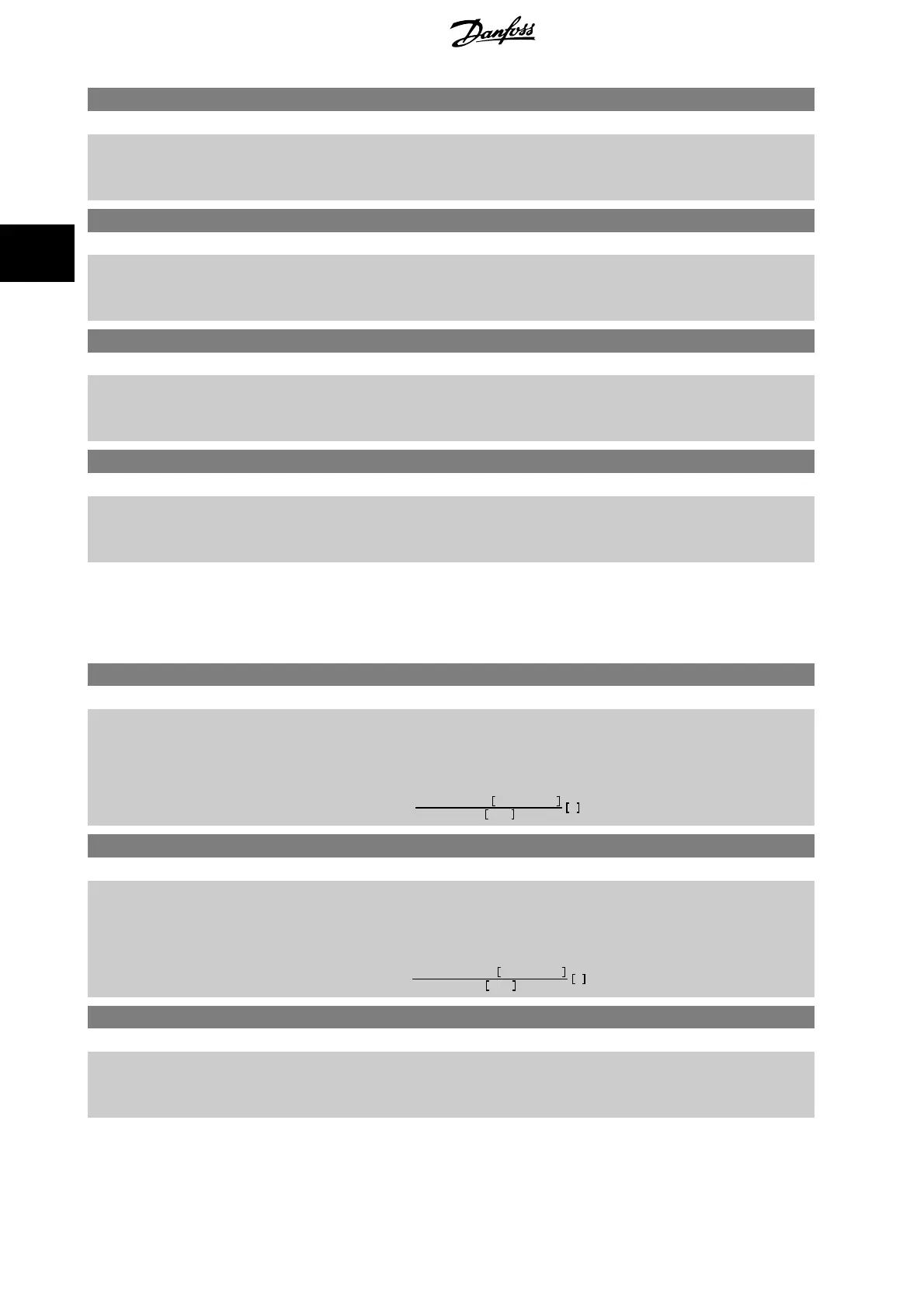3-45 Ramp 1 S-ramp Ratio at Accel. Start
Range: Function:
50 %* [Application dependant] Enter the proportion of the total ramp-up time (par. 3-41
Ramp 1 Ramp up Time
) in which the
acceleration torque increases. The larger the percentage value, the greater the jerk compensation
achieved, and thus the lower the torque jerks occurring in the application.
3-46 Ramp 1 S-ramp Ratio at Accel. End
Range: Function:
50 %* [Application dependant] Enter the proportion of the total ramp-up time (par. 3-41
Ramp 1 Ramp up Time
) in which the
acceleration torque decreases. The larger the percentage value, the greater the jerk compensation
achieved, and thus the lower the torque jerks in the application.
3-47 Ramp 1 S-ramp Ratio at Decel. Start
Range: Function:
50 %* [Application dependant] Enter the proportion of the total ramp-down time (par. 3-42
Ramp 1 Ramp Down Time
) where the
deceleration torque increases. The larger the percentage value, the greater the jerk compensation
achieved, and thus the lower the torque jerks in the application.
3-48 Ramp 1 S-ramp Ratio at Decel. End
Range: Function:
50 %* [Application dependant] Enter the proportion of the total ramp-down time (par. 3-42
Ramp 1 Ramp Down Time
) where the
deceleration torque decreases. The larger the percentage value, the greater the jerk compensation
achieved, and thus the lower the torque jerks in the application.
3.5.4 3-5* Ramp 2
Choosing ramp parameters, see 3-4*.
3-51 Ramp 2 Ramp Up Time
Range: Function:
Application
dependent*
[Application dependant] Enter the ramp-up time, i.e. the acceleration time from 0 RPM to par. 1-25
Motor Nominal Speed
.
Choose a ramp-up time such that the output current does not exceed the current limit in
par. 4-18
Current Limit
during ramping. See ramp-down time in par. 3-52
Ramp 2 Ramp Down
Time
.
par
. 3 − 51 =
tacc
×
nnorm
par
. 1 − 25
ref
rpm
s
3-52 Ramp 2 Ramp Down Time
Range: Function:
Application
dependent*
[Application dependant] Enter the ramp-down time, i.e. the deceleration time from par. 1-25
Motor Nominal Speed
to 0 RPM.
Choose a ramp-down time such that no over-voltage arises in the inverter due to regenerative
operation of the motor, and such that the generated current does not exceed the current limit set
in par. 4-18
Current Limit
. See ramp-up time in par. 3-51
Ramp 2 Ramp Up Time
.
par
.3 − 52 =
tdec
×
nnorm
par
. 1 − 25
ref
rpm
s
3-55 Ramp 2 S-ramp Ratio at Accel. Start
Range: Function:
50 %* [Application dependant] Enter the proportion of the total ramp-up time (par. 3-51
Ramp 2 Ramp up Time
) in which the
acceleration torque increases. The larger the percentage value, the greater the jerk compensation
achieved, and thus the lower the torque jerks in the application.
3 Parameter Description VLT
®
HVAC Drive Programming Guide
68
MG.11.C9.02 - VLT
®
is a registered Danfoss trademark
3

